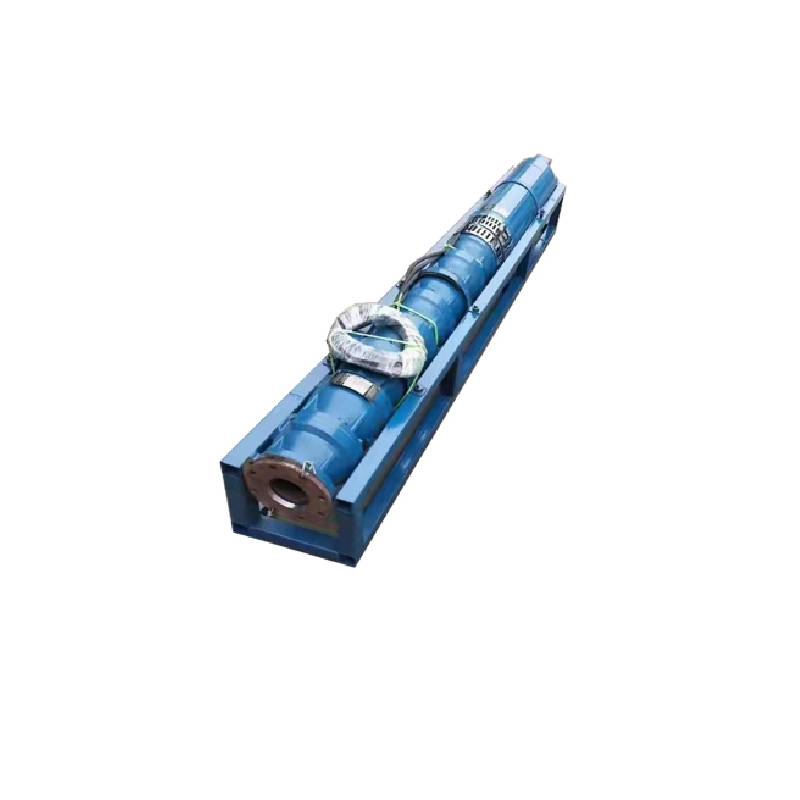9 月 . 22, 2024 01:21 Back to list
how does a deep well submersible pump work
How Does a Deep Well Submersible Pump Work?
Deep well submersible pumps are an essential technology used in water extraction from deep underground sources. These pumps are designed to operate while submerged in water, making them highly efficient for deep wells, typically exceeding depths of 25 feet. Understanding how they work involves looking into their structure, operation, and applications.
Structure of a Submersible Pump
A deep well submersible pump consists of several key components including a motor, a pump, a discharge head, and a drop pipe. The motor is situated at the bottom of the pump, surrounded by water. It is specially sealed to prevent water ingress and is designed to operate efficiently underwater. The pump housing encases the impellers, which are crucial for moving water. These impellers are placed in series, enabling the pump to lift water from greater depths.
The discharge head is the top part of the pump that connects to the surface plumbing. It manages the flow of water to the surface and depends on gravity and pressure for transportation. The drop pipe connects the pump to the discharge head, allowing the pumped water to rise to the surface.
Operational Mechanism
The operation of a deep well submersible pump can be summarized in a few steps. Initially, the submersible motor is powered by electricity, which drives the impellers. When the motor operates, it turns the impellers at high speeds, creating a centrifugal force that pushes water upward through the pump.
how does a deep well submersible pump work

As the impeller spins, it imparts kinetic energy to the water, which is then transformed into pressure energy, allowing the water to ascend through the drop pipe. Each stage of impeller increases the pressure, making it possible for the pump to draw water from significant depths. The combination of multiple impellers in one assembly amplifies this effect, making submersible pumps capable of reaching depths of several hundred feet.
Applications
Deep well submersible pumps are widely utilized for various applications. In agricultural settings, they are used for irrigation, ensuring crops have the necessary water supply. In municipal water supply systems, these pumps are vital for providing potable water to communities. They are also employed in industrial processes and for dewatering in construction sites and mines.
In addition to their versatility, submersible pumps are known for their efficiency. Being submerged prevents overheating, which can be a common issue for surface pumps. Furthermore, since they are installed below the water table, they have a lower risk of cavitation, a phenomenon that can damage pumps by causing vapor bubbles to collapse.
Conclusion
In summary, deep well submersible pumps play a pivotal role in accessing groundwater resources efficiently. Through their unique construction and operational mechanisms, they enable the extraction of water from great depths. With their widespread applications and operational efficiency, these pumps are a crucial component in various sectors, helping to meet the growing demand for water in a sustainable manner. Understanding how they work not only sheds light on their importance but also highlights the advancements in technology that facilitate our access to essential water resources.
-
Your Guide to Deep Well Pumps
NewsOct.31,2024
-
Why Choose a Stainless Steel Deep Well Pump?
NewsOct.31,2024
-
Understanding Water-Filled Submersible Pumps
NewsOct.31,2024
-
Understanding SS Submersible Pumps
NewsOct.31,2024
-
Reliable Submersible Well Pumps for Your Water Supply Needs
NewsOct.31,2024
-
Choosing the Right Submersible Pump for Your Water Management Needs
NewsOct.31,2024
-
 Understanding Water-Filled Submersible PumpsWhen it comes to selecting the right pump for your water management needs, understanding the different types available is crucial.Detail
Understanding Water-Filled Submersible PumpsWhen it comes to selecting the right pump for your water management needs, understanding the different types available is crucial.Detail -
 Guide to Installing a Deep Well Submersible PumpWhen dealing with deep wells, a deep well submersible pump is often the most effective solution for extracting water from significant depths.Detail
Guide to Installing a Deep Well Submersible PumpWhen dealing with deep wells, a deep well submersible pump is often the most effective solution for extracting water from significant depths.Detail -
 Finding the Right Submersible PumpWhen seeking an efficient solution for pumping water from deep wells, sumps, or other applications, the submersible pump is a leading choice.Detail
Finding the Right Submersible PumpWhen seeking an efficient solution for pumping water from deep wells, sumps, or other applications, the submersible pump is a leading choice.Detail
